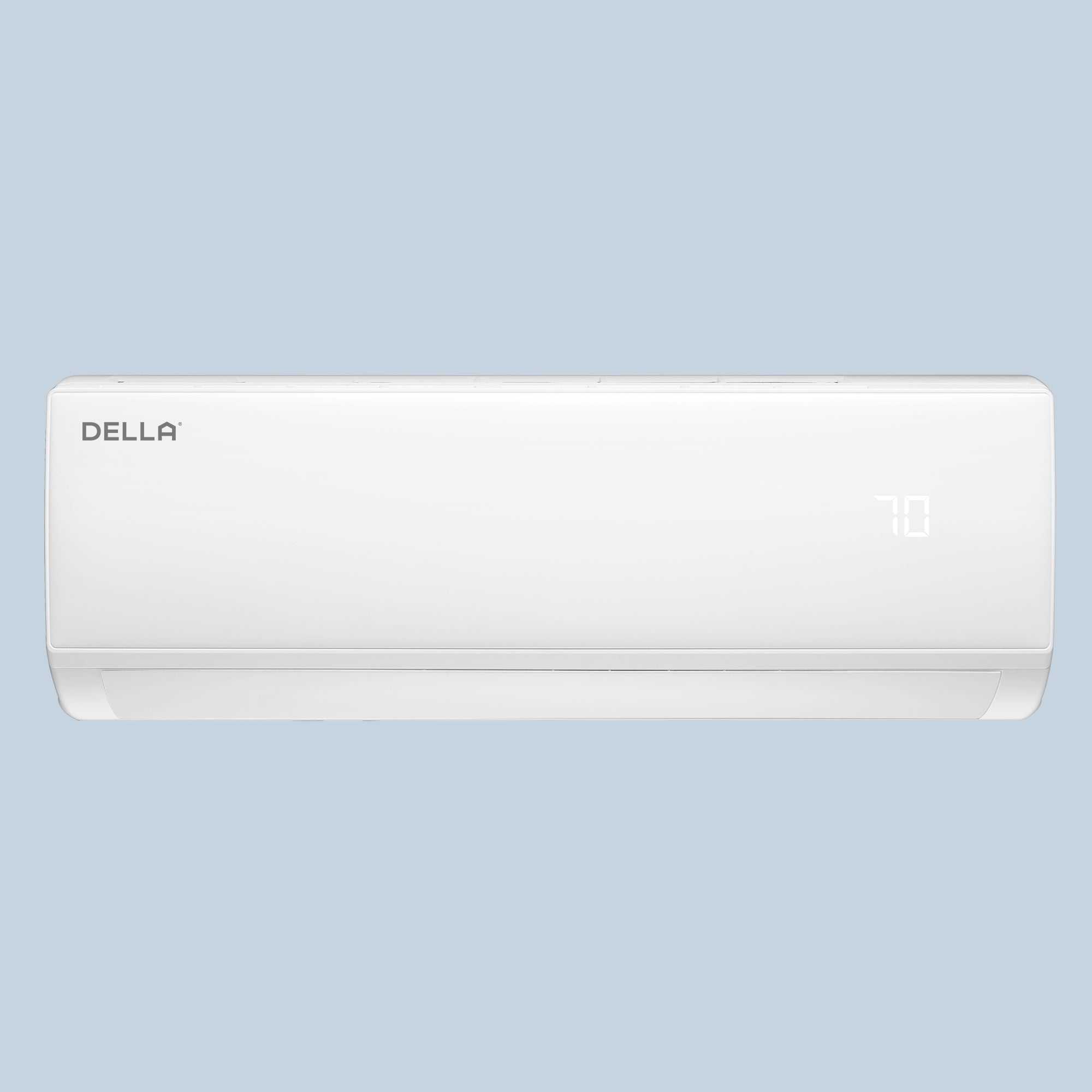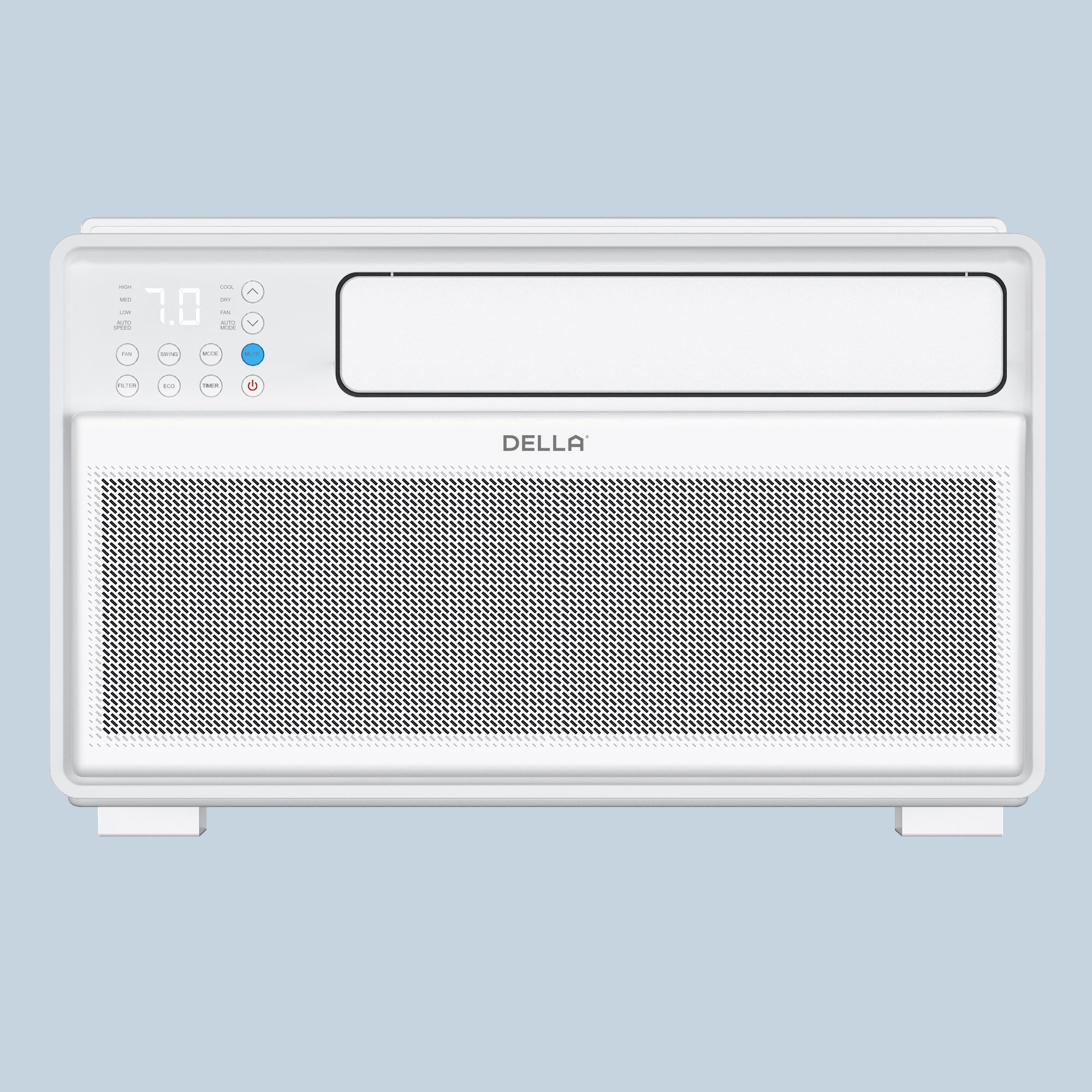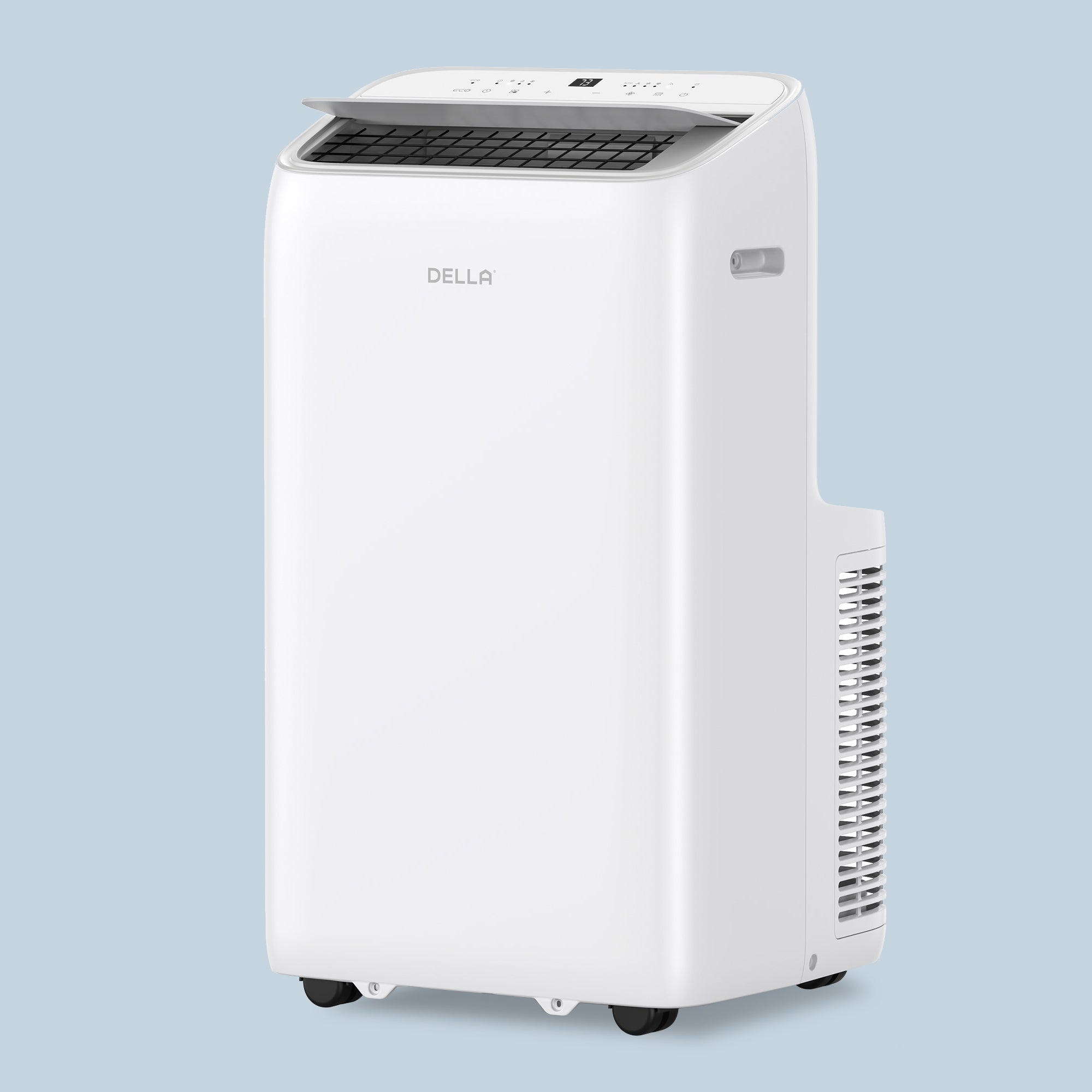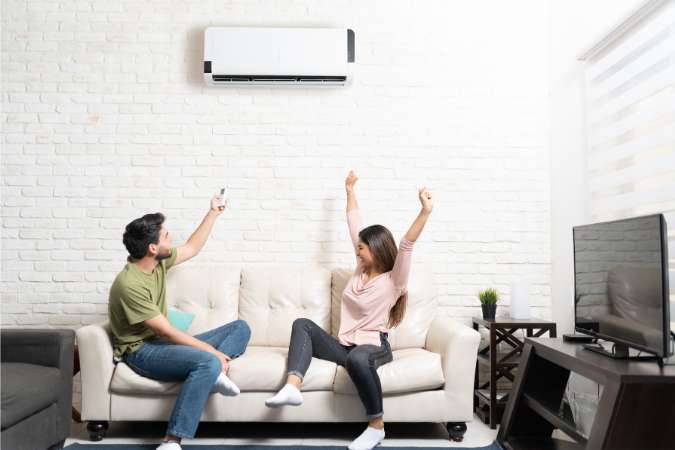A mini split AC usually draws between 15 to 45 amps, influenced by factors like BTU size, voltage, efficiency rating, type, and whether it’s cooling or heating.
In this guide, we’ll explore how many amps a mini split uses in various aspects.
What is Amperage in Mini Split AC?
Amperage refers to the amount of electrical current your mini split AC draws from your system.
It’s a key factor in determining whether your existing electrical setup can handle the load.
If the mini split AC amperage draw is too high for your circuit, it can cause breaker trips or even damage to your equipment.
Factors That Affect Mini Split Amperage
Here are several key factors determining how many amps your mini split will draw:
BTU Size (Capacity)
The BTU (British Thermal Unit) rating directly influences the amperage a split AC uses.
Higher BTU systems, which cool or heat larger spaces, require more power.
For example, a 9000 BTU air conditioner unit will use fewer amps compared to a 36000 BTU mini split system.
Voltage
Mini splits can operate on different voltages, typically 110V, 120V, or 220V.
Systems running on higher voltage (such as 220V) tend to draw fewer amps compared to lower-voltage systems (like 110V or 120V).
This is because higher voltage allows for more efficient power distribution, reducing the strain on the electrical circuit and lowering the overall amperage required for the same BTU size.
Efficiency Rating (SEER)
The Seasonal Energy Efficiency Ratio (SEER) rating measures the efficiency of the mini split system.
Mini Split units with higher SEER ratings are more energy-efficient, meaning they can provide the same cooling or heating while using less electricity.
As a result, systems with a higher SEER rating tend to draw fewer amps, as they use power more efficiently.
Cooling vs. Heating Mode
Mini splits heat pumps are typically more power-hungry when operating in heating mode compared to cooling mode.
This is because producing heat, especially in colder environments, demands more energy than cooling down a space.
Type of Mini Split
The type of mini split system can also affect the split AC system amperage.
For instance, inverter-driven mini splits, which adjust the compressor speed to maintain the desired temperature, generally use fewer amps than non-inverter models, which cycle on and off.
Additionally, multi-zone mini split systems, which serve multiple rooms, may draw more amps as they handle larger loads compared to single-zone units.
Installation and Refrigerant Line Length
Although less significant than other factors, the installation quality and the length of the refrigerant lines can slightly impact the amperage.
Longer lines or poorly installed systems may cause the compressor to work harder, resulting in higher amp draw to maintain the system’s efficiency.

How to Calculate the Amps of Your Mini Split?
Calculating the amps your mini split uses is straightforward if you know a few key details about your system. The basic formula is:
Amps = Watts ÷ Voltage
To calculate the amps, first, you need to know the wattage of your mini split.
Most units will have a label indicating their wattage, or you can refer to the manufacturer’s specifications.
Once you have the wattage, divide it by the voltage of your system, which is typically 110V, 120V, or 220V.
For example, if your mini split is rated at 2400 watts and runs on a 220V system, the calculation would be:
2400 watts ÷ 220 volts = 10.9 amps
This formula gives you the average amps your system will draw under normal operation.
By using this simple calculation, you can ensure your electrical system can safely support your mini split’s power needs.
Based on the above calculations, we can approximate the AMP consumed by air conditioners of different BTUs and voltages.
Amperage by BTU Size
-
9000 BTU Mini Split typically draws 8 to 12 amps. Ideal for smaller spaces, like bedrooms or home offices.
-
12000 BTU Mini Split requires around 10 to 15 amps, suitable for medium-sized rooms or small apartments.
-
18000 BTU Mini Split draws about 12 to 20 amps, working well for larger areas or open-plan spaces.
-
24000 BTU Mini Split uses 15 to 25 amps and is appropriate for large living rooms or commercial spaces.
-
36000 BTU Mini Split requires 20 to 30 amps, often used in expansive areas like large commercial spaces or entire homes.
| BTU Size | Amps Range |
| 9000 BTU | 8-12 amps |
| 12000 BTU | 10-15 amps |
| 18000 BTU | 12-20 amps |
| 24000 BTU | 15-25 amps |
| 36000 BTU | 20-30 amps |
Amperage by Voltage
-
110V/120V Mini Split Units generally draw more amps compared to 220V systems due to the lower voltage. A 12000 BTU mini split, for example, will draw higher amps on a 120V circuit than a 220V one.
-
220V Mini Split Units systems tend to use fewer amps for the same BTU size because higher voltage reduces the current draw.
| Voltage | Amps Range (Example 12000 BTU) |
| 110V/120V | Higher amp draw (e.g. 12-15 amps) |
| 220V | Lower amp draw (e.g. 10-12 amps) |
Choosing the Right Breaker Size for Your Mini Split
A breaker protects the circuit by cutting off the power if the current exceeds safe levels. the breaker's capacity must be higher than the system's maximum amp draw to prevent overloading.
As a general rule, you should choose a breaker with a capacity 25-30% higher than the system’s maximum amp draw.
Here’s a quick guide to choosing the right breaker size:
-
9000 BTU Mini Split requires a breaker rated around 15 to 20 amps.
-
12000 BTU Mini Split needs a breaker size of 20 to 25 amps.
-
18000 BTU Mini Split should be paired with a breaker rated at 25 to 30 amps.
-
24000 BTU Mini Split typically needs a breaker rated around 30 to 35 amps.
-
36000 BTU Mini Split requires a larger breaker, usually around 40 to 50 amps.
| BTU Size | Breaker Size |
| 9000 BTU | 15-20 amps |
| 12000 BTU | 20-25 amps |
| 18000 BTU | 25-30 amps |
| 24000 BTU | 30-35 amps |
| 36000 BTU | 40-50 amps |
Tips to Reduce the Amps Your Mini Split Uses
Reducing the amperage your mini split air conditioner draws can help improve energy efficiency and lower your electricity bills. Here are some practical tips to achieve this:
Choose a High SEER Rating
Opt for a mini split system with a high SEER (Seasonal Energy Efficiency Ratio) rating.
Higher SEER-rated units use less electricity to provide the same cooling or heating, resulting in lower amp draw and reduced power consumption.
Use the Right Size Unit for Your Space
Installing a unit that’s too large or too small for your space can lead to inefficient operation and increased amp usage.
Make sure to select a system with the appropriate BTU size for the area you want to cool or heat.
Install a Programmable Thermostat
A programmable thermostat helps you control the temperature more effectively by adjusting it based on your schedule.
By optimizing the mini split AC unit’s operating times, you reduce the energy load, lowering the amp draw.
Ensure Proper Insulation
Good insulation keeps the indoor temperature stable, reducing the strain on your mini split system.
When the mini split AC system doesn’t have to work as hard to maintain the desired temperature, it will naturally draw fewer amps.
Clean and Maintain Your Mini Split Regularly
Regular maintenance, such as cleaning the filters and ensuring the outdoor unit is free of debris, keeps the system running efficiently.
A well-maintained unit draws fewer amps compared to a system that’s clogged or dirty.
Use Inverter Technology
Mini split systems with inverter technology adjust the compressor speed based on the temperature needs.
This eliminates the need for the system to constantly power on and off, reducing amp draw and overall energy usage.

Conclusion
A mini split’s amp usage depends on factors like BTU size, voltage, and efficiency. Lower your mini splits air conditioners AMP helps you have a more comfortable room and lower bills.
Whether you're considering a 110V mini split air conditioner or an 18000 BTU mini split, optimizing your system will improve efficiency. For the best deals on energy-efficient air conditioners, check out Dellahome’s latest air conditioner sale and start saving on your cooling costs today.
Related Reading:
How Many BTU to a Ton? Your Guide to the Right Air Conditioner








LEAVE A COMMENT
All comments are moderated before being published.
This site is protected by hCaptcha and the hCaptcha Privacy Policy and Terms of Service apply.